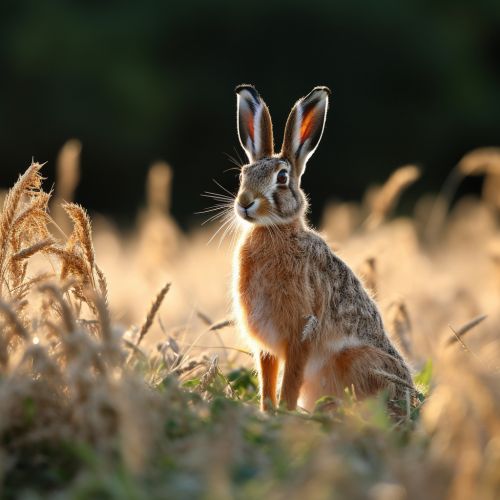Leporidae
Taxonomy and Evolution
The family Leporidae was first described by John Edward Gray in 1821. It is part of the order Lagomorphs, which also includes the pikas (family Ochotonidae). The Leporidae family is divided into two subfamilies, the Leporinae (hares and rabbits) and the Pentalaginae (the Amami rabbit). The family contains eleven genera and more than sixty species.
The Leporidae family has a complex evolutionary history. The earliest known leporid fossils date back to the Eocene epoch, approximately 40 million years ago. Over time, the family has diversified and adapted to a wide range of environments, from arctic tundra to desert landscapes.


Characteristics
Members of the Leporidae family, commonly known as rabbits and hares, are small to medium-sized mammals. They are characterized by their long ears, large hind legs, and short, fluffy tails. The hind legs are adapted for fast running, a key defense mechanism against predators. The ears, which can be as long as 10 cm in some species, are used for thermoregulation and detecting predators.
The fur of leporids can vary greatly in color, from white to brown to black, often with patterns or color changes depending on the season. Some species, such as the snowshoe hare, change their fur color to white in winter for camouflage in the snow.
Behavior and Ecology
Leporids are primarily herbivorous, feeding on a variety of plant materials including grasses, leaves, and bark. Some species have been known to eat their own feces to re-digest plant material and extract more nutrients.
Most leporids are solitary animals, although some species, like the European rabbit, live in complex social structures. They are generally crepuscular, being most active during dawn and dusk. However, their activity patterns can change depending on the season and predator presence.
Leporids have a high reproductive rate, with females capable of producing multiple litters each year. This high reproductive rate helps to offset the high predation rates that many species face.
Distribution and Habitat
Leporids are found worldwide, with the exception of Antarctica, most of the southern parts of South America, and the West Indies. They inhabit a wide range of habitats, from deserts to forests to grasslands. Some species have been introduced by humans to areas outside their native range, often with significant ecological consequences.
Conservation
Many species of leporids are of conservation concern due to habitat loss, hunting, and disease. The International Union for Conservation of Nature (IUCN) lists several species as endangered or critically endangered, including the Sumatran striped rabbit and the Amami rabbit.
Conservation efforts for leporids include habitat protection and restoration, hunting regulation, and captive breeding programs. However, these efforts are often hampered by a lack of funding and public awareness.
